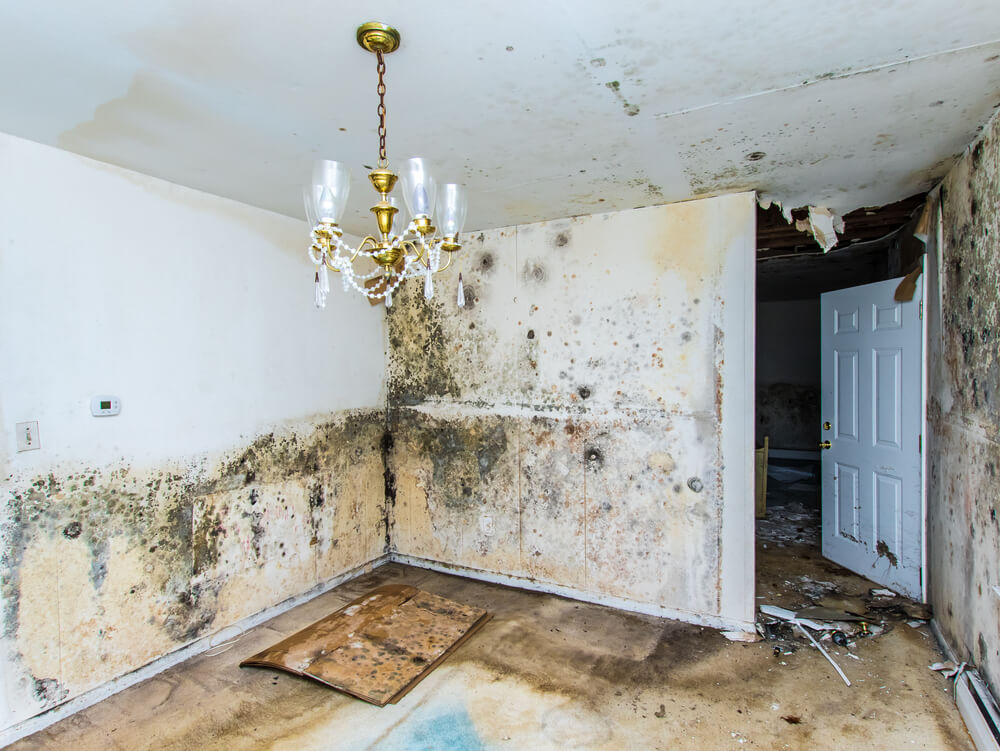
Damp is a common problem, especially with older homes. Whether from wet weather or excessive condensation, damp can come in many forms.
Spotting damp early is key to treating it, as it reduces the risk of long-term structural damage if the issue is rectified early on. But what are the types of damp, and how can you identify it?
The Different Types of Damp
There are three main types of damp:
- Condensation
- Penetrating damp
- Rising damp
The different types of damp occur differently, although are often caused by common problems.
Condensation
Condensation is caused when the dew point of water is reached and moisture in the air turns to water droplets. You often see it when boiling a kettle near the window on a cold morning and the steam turns to water droplets on the window.
Condensation often also occurs after a shower, or a hot bath, and is a normal occurrence. However, it becomes an issue when it is excessive, long lasting and affects other areas of the room.
It can be prevented by opening windows, using an extractor fan where one has been installed or by using a moisture meter to monitor rooms that seem especially prone to condensation.
Identifying Condensation-Related Damp
- Excessively damp windows
- Patches of damp on internal walls, often surrounding windows
- Mould on window seals, and pools of water on windowsills
- Bubbling wallpaper
- Black mould spots on walls
- Unpleasant smells, whether musty or mouldy
- Carpets and soft furnishings feeling damp, especially in the morning or at night
Penetrating damp
Penetrating damp is caused by cracks in walls, broken guttering, or broken pipes. Rather than rising damp, which moves upwards penetrating damp can move at any angle but is often horizontally detected.
It’s important to recognise penetrating damp early, as it causes more long-term problems when compared with other types of damp and it can suggest structural issues.
Identifying Penetrating Damp
- Patches of damp on walls or ceilings that get worse in wet weather
- External walls showing signs of damp
- Crumbling plaster that worsens in wet weather or after water usage
- Localised damp patches that are often collected in one area
Rising damp
While modern homes are built with better damp membranes in, older homes and those with extensions often suffer with rising damp, due to aged membrane materials, or the natural decline of materials.
Rising damp will start from the floor up and can be caused by sitting water or simply excess moisture below the home that can’t escape out the side of the foundations.
Identifying Rising Damp
- Damaged skirting boards, and peeling wallpaper or paint at the base of the wall
- Tide marks, either yellow or brown in colour, rising up the wall
- The floor feeling damp, especially at the sides of the room
- A white, powder-like substance on the wall
How to Deal with Damp
Damp can be dealt with, especially in the earlier stages, by a homeowner. However, without understanding what type of damp you have, and what has caused it, you will struggle to fully deal with the problem in the long run.
For DIY projects, you can:
- Apply a mould removal solution to deal with the visual mould spores
- Open windows more regularly, or use a small dehumidifier
- Repair gutters and external pipes to reduce leaks into walls
However, the best way to completely remove mould is to get a professional survey done, and restoration work carried out.
The Benefits of a Professional Mould Service
Professionals, such as Restorations (UK), have access to leak detection technology and can quickly identify the source of the mould, making it easier to source the problem, and fix it. This gives homeowners and building managers the guarantee that there will be no recurring issues because of this problem.
Once the source of the mould is found, and the issue fixed, a mould restoration specialist can fully restore your home and ensure that any dangerous mould does not return and cause illness.
If you’re looking for a mould remediation specialist, get in touch with Restorations (UK) to see how we can help.

